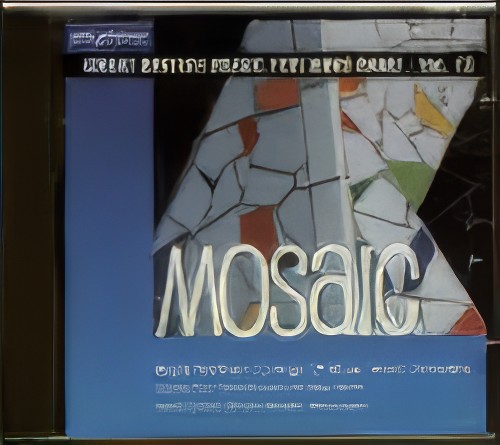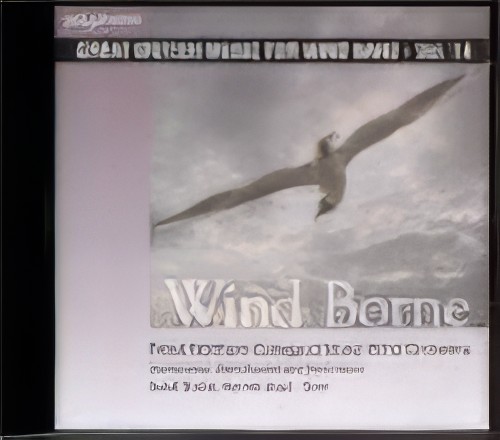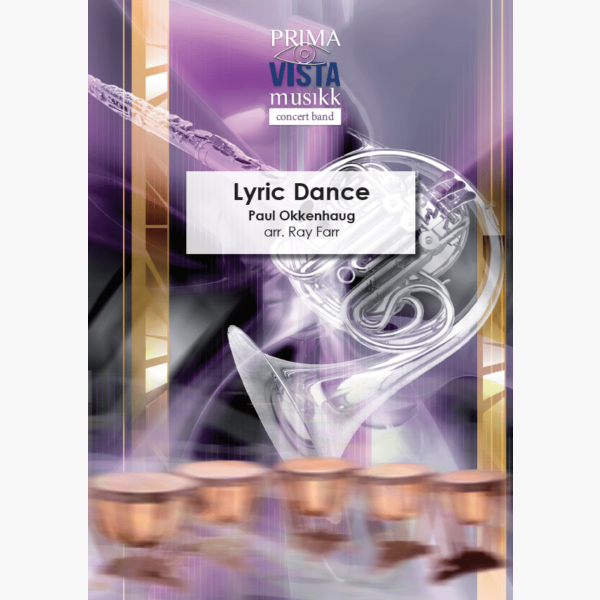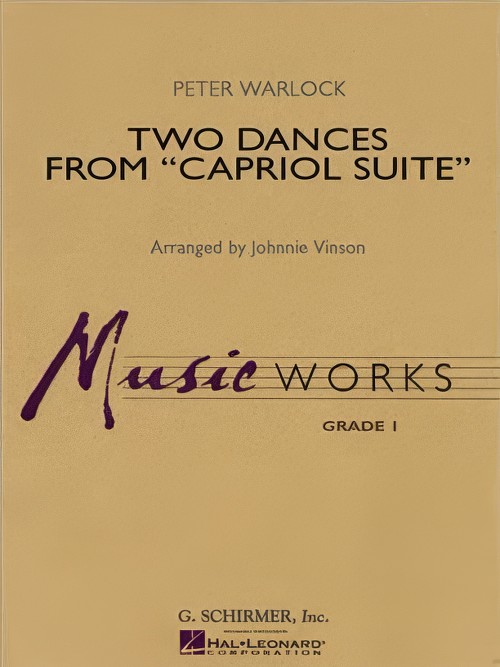Results
-
 £13.95
£13.95MOSAIC (Royal Northern College of Music Wind Band) (CD)
Great British Music for Wind Band Vol.13 Royal Northern College of Music Wind Orchestra conducted by Clark Rundell and Mark Heron. Guest Soloist: Simone Rebello (Percussion). Includes: Yorkshire Overture (Philip Sparke); Mosaic (Kit Turnbull); Gypsy Dance (Baile de Gitano) (Rob Wiffin); The Canticle of the Sun (Martin Ellerby); Midnight in Buenos Aires (Adam Gorb); A Cambrian Suite (Michael Ball); Tristan Encounters (Martin Ellerby)
Estimated dispatch 7-14 working days
-
 £13.95
£13.95WIND BORNE (Royal Northern College of Music Wind Band) (CD)
Great British Music for Wind Band Vol.14 Royal Northern College of Music Wind Orchestra conducted by Clark Rundell and Mark Heron. Guest Soloist: Kenneth Boyd (Tenor). Includes: Heroic March (Fletcher/Sparke); The Cries of London (Martin Ellerby); Diversions (Epitaph for a Dreamer) (Darrol Barry); Leading Edge (Rob Wiffin); Wind Borne (Avner Hanani); Dragon Dance (Duncan Stubbs); Fanfares and Celebrations (Nigel Clarke)
Estimated dispatch 7-14 working days
-
 £84.99
£84.99Thank You For The Music - Björn Ulvaeus
The Swedish band ABBA ruled the pop charts in the 70s with their unique. Folksy style of disco dance songs and heart-felt ballads. Their music has been cleverly woven into the musical show Mamma Mia!, which has played to sold-out audiences everywhere. Don Campbell's exciting arrangement of Thank You for the Music brings one of the highlights from this hit musical to your concert stage. Don't miss out on the fun!
Estimated dispatch 7-14 working days
-
£13.95
Spirit of the Dance
1Their Finest HourNigel ClarkeRoyal Northern College of Music Wind Orchestra5.002A Norfolk RhapsodyMartin EllerbyRoyal Northern College of Music Wind Orchestra10.113Looking InTom DavorenRoyal Northern College of Music Wind Orchestra10.054-6Cinnamon ConcertoMartin EllerbyRob Buckland (Alto Saxophone) with Royal Northern College of Music Wind Orchestra I. The Fast Lane 5.57 II. The Night hawks 8.23 III. The Razzle Dazzle! 3.467Harlech VariantsDuncan StubbsRoyal Northern College of Music Wind Orchestra9.398-10Spirit of the DanceRob WiffinRoyal Northern College of Music Wind Orchestra I. Stomping Dance 4.29 II. Waltz Interlude 3.54 III. Duende 4.09
Estimated dispatch 7-14 working days
-
 £42.00
£42.00Renaissance Dance - Tielman Susato
The music of Susato has long been a staple in band music, as it is some of the first examples of music for consorts of instruments. Band directors have long embraced his music to teach the Renaissance style. With Renaissance Dance, Bill Calhoun has delivered the easiest possible arrangement of this famous Susato piece taking care to retain the original style and teachability.
Estimated dispatch 12-14 working days
-
 £59.95
£59.95Lyric Dance - Paul Okkenhaug - Ray Farr
Paul Okkenhaug was a prolific composer and organ virtuoso, but due to his own modesty and self-criticism, only a few of his compositions have been published. He has composed chamber music, orchestral music, piano music, and music for the theatre....
Estimated dispatch 5-7 days
-
 £113.30
£113.30Moderate Dances - Angelo Sormani
This piece is a tribute to dance music, especially passionate, intense and meditative dance music. "Moderate Dances" is divided into three movements: a "Tango", a "Slow Waltz" and a "Bossa Nova". Each movement and each dance has its own particular characteristics but, when combined, these different rhythmic beats and times give the piece a feeling of completeness and uniformity. The Tango started to flourish in the suburbs of Buenos Aires in around 1880. There is still some doubt as to its origins, which may be Cuban (Habanera) but are probably African. It was most popular in Argentina and Brazil: here the male protagonist was originally the "gaucho" with his inseparable guitar, later to be replaced by the proud, elegant "compadre". By around 1910 the Tango had spread to Italy and France. New clubs opened, where the upper classes could watch and dance the Tango. Here the dance also underwent some rapid transformations. The exaggerated and extravagant gestures and body movements disappeared. Slow, gliding steps replaced the old rotational movements. The women's red ankle-boots and the partners "staring into each other's eyes" accentuated the erotic nature and sensuality of this dance. So much so that, in 1913, the German government banned soldiers from dancing the Tango. Those who broke the law were immediately discharged from the army. From a strictly musical perspective, the basic instruments were a flute, a harp (the diatonic harp typically played by the Indians of Paraguay) and a violin, or flute, guitar and violin or even clarinet, guitar and violin. These instruments were easy to transport, ideal for playing at parties, in the streets and in courtyards. The musicians played by ear, frequently improvising: there were no scores, no records, which is the main reason why it is impossible to trace the Tango back to its exact origins. However, the Tango's evolution (and growing popularity) was once again fostered by its fundamental ability to absorb "other" cultures, languages and sounds. And it was the arrival of the "bandoneon" (an accordion-like instrument that was invented in Germany and brought to Rio de la Plata by some immigrant), which replaced the flute, that marked the beginning of the Tango's huge success outside Argentina. A number of talented composers, above all the great Astor Piazzola (1921-1992), transformed the bandoneon from a simple accompanying instrument to a solo instrument that was to become the distinguishing feature of the 20th century Tango. The Slow Waltz originated from the Waltz, the typical dance of the Bavarian and Tyrolese peasants in the 1700s. It was composers like Johann Strauss, father and son, who carried the Waltz to its zenith in the 1800s, creating the sensual and melancholy yet joyful and charming dance we are all familiar with. When the Waltz first became popular in Germany, the members of respectable society were shocked at the closeness of the dancing partners, who had always previously danced apart. The main difference between the Waltz and Slow Waltz is that the latter has a slower, more expressive rhythm: the men wear tails and the women wear ball gowns decorated with beads and feathers and couples dance in graceful rotational movements. "Bossa Nova" is the title of the last movement in the piece. Jobim, the great Brazilian musician, described this musical genre as a combination of modern Jazz and Samba. Bossa Nova means "new wave". This was the name of the artistic and musical movement that evolved in Brazil in the late Fifties and was extremely popular throughout the Sixties. The songs are usually about love or social matters, drawing inspiration from the slums of Rio De Janeiro and the lives of their inhabitants. Bossa Nova, with its original compositions and the artistic talent of its musicians, also became hugely popular in the United States and Europe, and top Jazz musicians (Ella Fitzgerald, Stan Getz, Bob Cooper, Charlie Bird, Sonny Rollins, Dexter Gordon, Dizzy Gillespie) started to include Bossa in their repertoires.
Estimated dispatch 7-14 working days
-
 £29.95
£29.95FINAL DANCE Jota's Dance (Novello Symphonic Band) Extra Score - De Falla, Manuel - Wiggins, Bram
Extra Score only. Transcribed from the ballet, The Three-Cornered Hat.
Estimated dispatch 7-14 working days
-
 £38.50
£38.50Two Dances from "Capriol Suite" (Concert Band - Score and Parts)
Johnnie Vinson has expertly adapted two movements from this well-known suite by Peter Warlock based on 16th-century dance music. "Basse-Dance" is a stately and moderate tempo dance in 3/4, while "Mattachins" is an energetic sword dance in 2/4. The unique stylings, and at times unusual harmonies, have been preserved in these delightful setting for beginning players. (2:20)
Estimated dispatch 7-14 working days
-
£65.99
Polish Dance No. 1, Slavonic Dance No. 1 - Xaver Scharwenka
Estimated dispatch 7-14 working days
